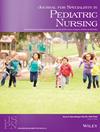Children's and adolescent's narratives about pain and negative experiences in diabetes treatment
Abstract
Pain and fear associated with needle procedures have been found to be more common among children and adolescents treated for type 1 diabetes (T1D) than among others in their age group. Furthermore, high glycated haemoglobin (HbA1c) values are associated with needle-related fear.
Aim
To describe negative experiences of needle procedures in childhood diabetes treatment from children's and adolescents' own perspectives.
Methods
Short written narratives (n = 83) and drawings (n = 2) from children and adolescents treated for T1D, aged 7–18 years, were subjected to inductive qualitative content analysis.
Results
Negative experiences with needle procedures had many facets, such as pain and fear, changing over time and affecting everyday life. All kinds of needle procedures caused difficulties, but venipunctures were described as the worst.
Conclusion
All needle procedures involved in diabetes treatment are potentially experienced as creating pain and fear, but the negative experiences are multifaceted and vary between individuals. These experiences create suffering for children and adolescents, and influence their daily lives. Besides finding techniques to decrease the number of needle procedures in the treatment, research should focus on implementing methods to decrease pain, fear, and other negative experiences as well as to promote self-coping. This is urgent, since needle-related fear has an impact on glycaemic control and therefore increases the risk of long-term complications.
Clinical Implications
When caring for children and adolescents with diabetes, their previous experiences with needle procedures need to be considered.

 求助内容:
求助内容: 应助结果提醒方式:
应助结果提醒方式:


